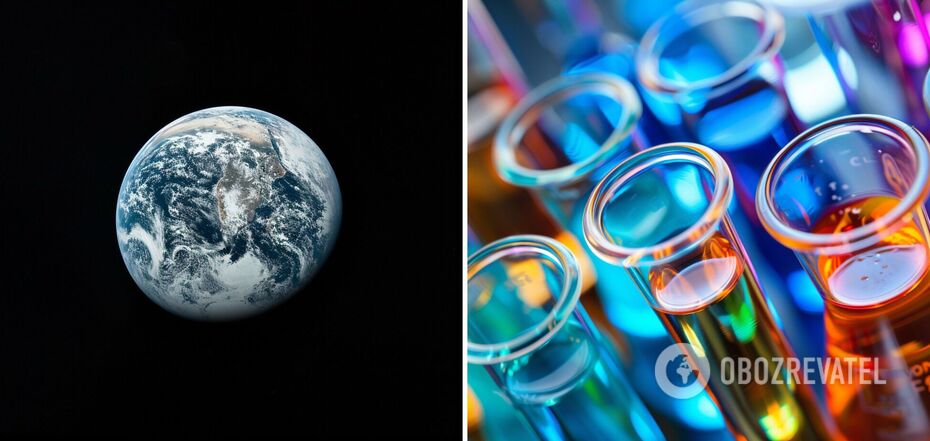News
A key component of the origin of life on Earth synthesized in the University College London laboratory
The origin of life on Earth is still one of the key mysteries of science, and it seems that researchers are closer to solving it. A team of scientists from University College London (UCL) has successfully synthesized a chemical compound that could have existed on our planet in the early stages of its existence. This indicates the potential involvement of this compound in the origin of life.
According to SciTechDaily, the panthetein compound in question is an active fragment of Coenzyme A. This compound is important for metabolism, a set of chemical processes that support life in organisms. Previously, scientists had not been able to effectively synthesize pantheine, which led to the assumption that it was not involved in the process of the origin of life on Earth.
Now, a group of scientists has managed to create this compound in water at room temperature. To do this, they used molecules formed from hydrogen cyanide, which was probably abundant on the early Earth. The researchers published an article about the results of their work in the journal Science.
In it, the scientists suggest that, having been synthesized in some natural way, pantheine could have contributed to the chemical reactions that led to the transformation of simple precursors of protein and RNA molecules into the first living organisms. This is believed to have happened 4 billion years ago.
The work challenges the assumption of some researchers that life could not have arisen in water because it is too destructive. They put forward a theory that the first living organisms appeared in bodies of water that periodically dry up.
The role of aminonitriles
The driving force behind the reactions that led to the formation of pantheine were energy-rich molecules known in science as aminonitriles. They are chemically related to amino acids, the building blocks of proteins and, consequently, the basis of life.
The team is led by chemist Professor Matthew Powner. Under his leadership, UCL researchers have already used similar aminonitrile-based chemistry to demonstrate how other key compounds could have been created during the origin of life. These include peptides (chains of amino acids that make up proteins) and nucleotides (the building blocks of RNA and DNA).
"This new study is further evidence that the basic biological structures, the primary molecules from which biology is built, are prone to be formed using nitrile chemistry," Powner says. According to him, it turned out to be quite easy to reproduce different classes of biological molecules using nitriles. And this convinced the researcher that the idea that life was preceded by only one molecule, RNA, may be wrong. In fact, there was a whole "RNA world" and the basic molecules arose in parallel. Thus, according to scientists, RNA, proteins, enzymes, and cofactors arose, which laid the groundwork for the emergence of the first living organisms.
"Our future work will focus on how these molecules came together, how panthetein chemistry interacts with, for example, RNA, peptide, and lipid chemistry to provide chemistry that individual classes of molecules could not provide separately," the scientist added.
Historical context of the work
An earlier notable attempt to synthesize pantheine was made in 1995. It was made by American chemist Stanley Miller. It was he who began experiments in the field of the origin of life, creating amino acids from four simple chemicals in glass test tubes. However, his yield was very low and required extremely high concentrations of chemicals under very specific conditions. The dried substances were sealed in an airtight tube and then heated to 100 degrees Celsius.
Dr. Jasper Fairchild, lead author of the new study, explained that the main difference between this work and Miller's research is that the American scientist tried to use acid chemistry, while modern scientists used nitriles. "Our reactions simply take place in water and give high yields of pantheine at relatively low concentrations of the required chemicals," Fairchild said.
Professor Powner added, "It was assumed that these molecules should be created from acids because the use of acids seems biological, and that's what we're taught at school and university. We are taught that peptides are made of amino acids." However, according to him, this traditional approach leaves an important ingredient behind: the energy needed to create new bonds. "With nitriles, the reactions look a little different, but the end products - the basic units of biology - are indistinguishable from whether they are formed by acid or nitrile chemistry," he added.
Although the paper is exclusively about chemistry, the research team said that the reactions they demonstrated could well have occurred in pools or lakes of water on early Earth. However, it is unlikely that it happened in the oceans as the concentrations of chemicals were probably too high.
Subscribe to OBOZ.UA on Telegram and Viber to keep up with the latest events.



























